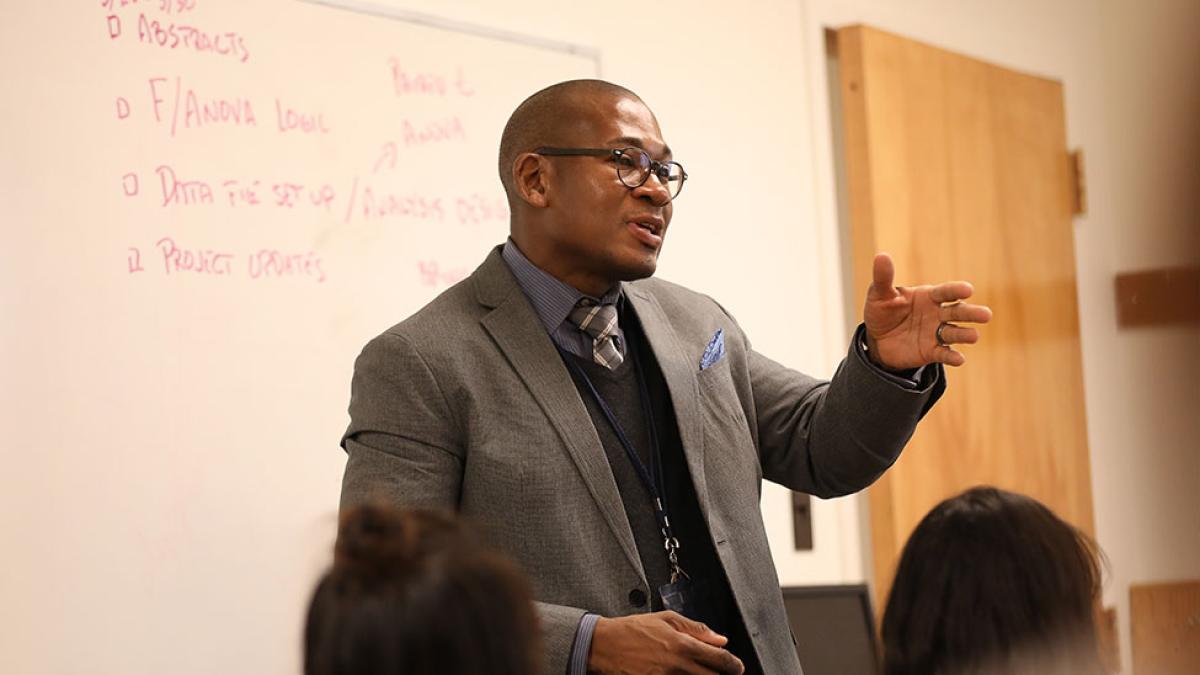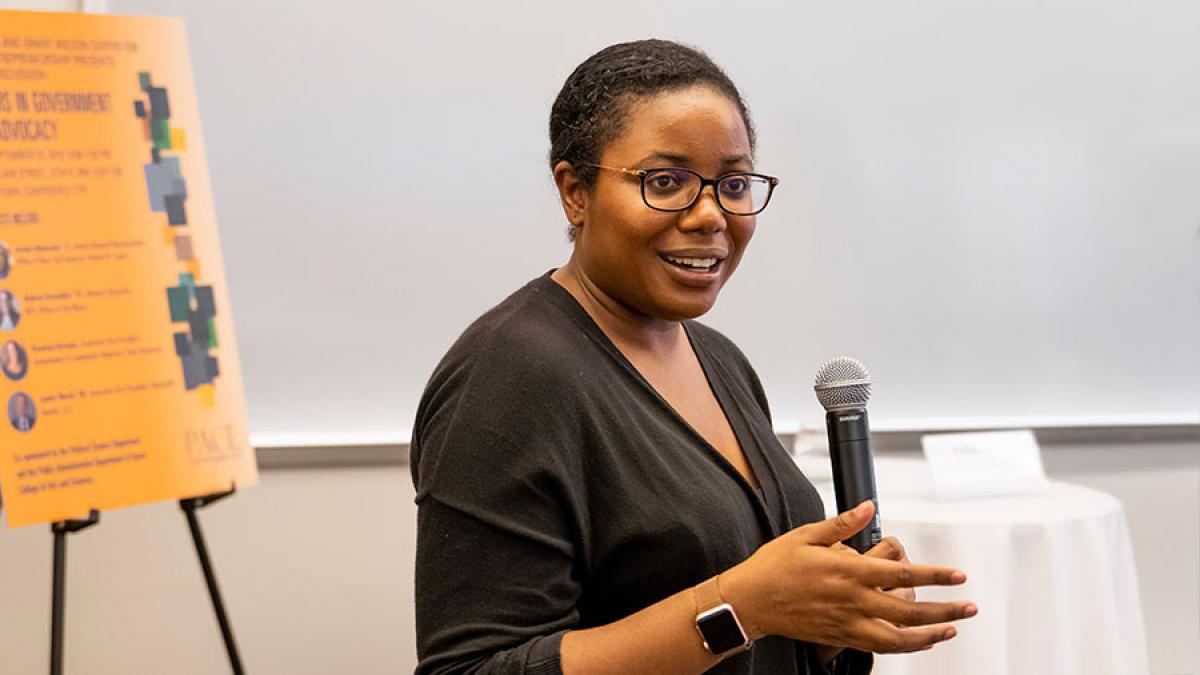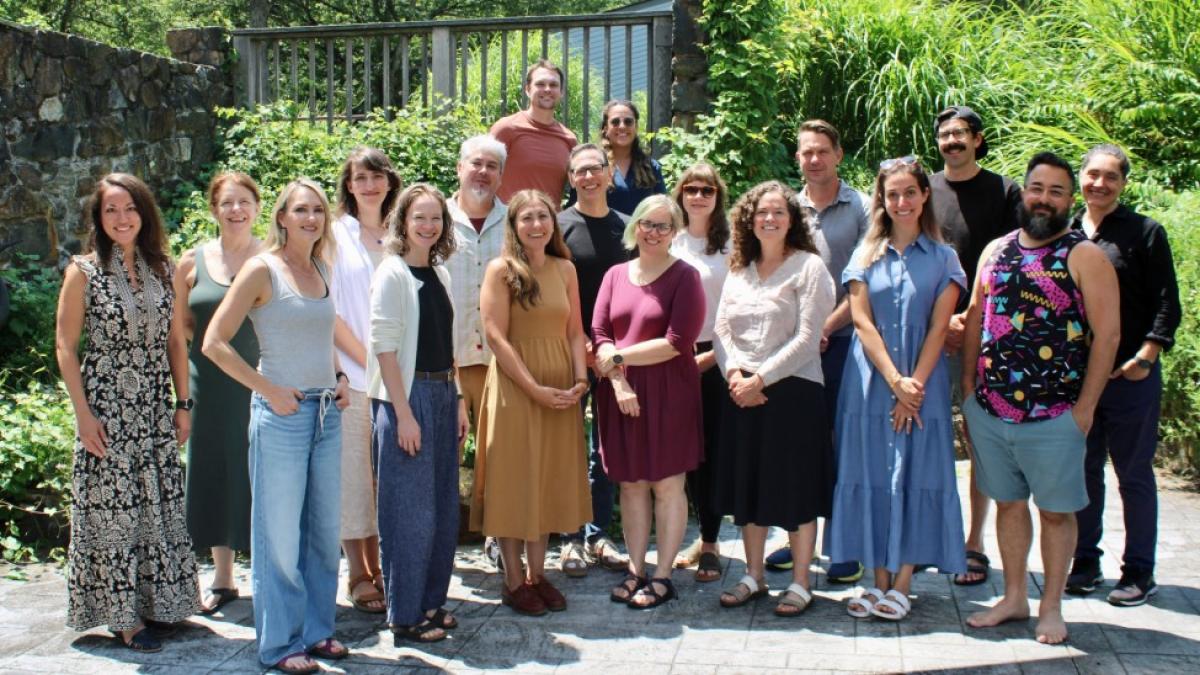At Pace’s CUHER lab, Associate Professor of Psychology Christopher Godfrey, PhD, is rethinking healthcare by centering communication, trust, and patient voices—especially those from marginalized communities too often left unheard.
Unboxing Logan: The First American Girl Boy Doll

Nostalgia for the American Girl Doll brand is no joke. Everyone has their favorite: from Molly loyalists to Samantha stans, their stories and styles have inspired young women and girls the world over with no sign of slowing down. There are several signature store locations across the US, a print magazine that lasted more than 20 years, and an extremely popular online fandom spanning YouTube, Instagram, Twitter, and more. It seems as though girls really do rule in the American Girl Doll universe, but what happens when a boy shows up on the scene for the first time ever?
Enter: Emilie Zaslow, PhD, professor and department chair of communication studies at Pace. She’s an expert on Mattel’s iconic line of toys, having published the book Playing With America’s Doll: A Cultural Analysis of the American Girl Collection. In a co-written chapter of the collection The Marketing of Children’s Toys, Emilie worked with Jaclyn Griffith ’17, a Pace alumna who earned her BA in Communication Studies, to study the unique production and marketing of Logan, Mattel’s first American Girl boy doll.
“[It’s] a brand known for outspoken girls who challenge social norms,” the two wrote. However, in the company’s attempt to be more inclusive, Emilie and Jaclyn determined that Mattel instead “created a narrative perpetuating gendered power relations.”
But let’s back up a bit. Initially, Logan’s groundbreaking announcement was mostly met with a positive reception. “For many children and collectors, Logan had the potential to become a beloved plaything, a unique character who could share toy shelves with his friend, Tenney,” Emilie and Jaclyn wrote. He was introduced along with Tenney, the American Girl doll from the same Contemporary Characters storyline, which would ultimately highlight their shortcomings in terms of design. (Something to note if you’re unfamiliar with the brand: American Girl dolls were representative of girls through the ages, many with a historical past.)
There were many codes for Logan’s traditional masculinity that set him apart from his female-coded counterpart, starting with his clothes, which were limited to two outfits with “muted colors” and only one accessory compared to Tenney, who wore “warm tones” with far more accessory options. “This reflects the cut and style of contemporary gendered clothing,” Emilie and Jaclyn explained. “The boy doll, as the girl consumer’s antithesis, is markedly free from the labor (and fun) involved in achieving normative beauty standards.”
“The dolls’ messaging [...] reifies hegemonic masculinity and normative femininity. Logan [became] emblematic of the white male privilege to occupy space, steal the spotlight, earn accolades for less work, and overpower girls and women.”
Logan was further othered by his “play loud” slogan, a narrative that reinforced boldness and aggression. His backstory, which included a father working abroad and the expectation that Logan help financially support his working class family, led him to feeling overwhelmed, moody, and frustrated. Tenney, his band partner, was expected to emotionally support Logan through his outbursts, effectively painting girls as on-call therapists.
“The dolls’ messaging [...] reifies hegemonic masculinity and normative femininity,” the two wrote. “Logan [became] emblematic of the white male privilege to occupy space, steal the spotlight, earn accolades for less work, and overpower girls and women.”
This was partly due to the timing of his release: Logan’s introduction came on the heels of Donald Trump’s win over Hillary Clinton during the landmark 2016 US Presidential Election. Consumers simply weren’t having it. “To introduce a boy doll without incorporating some critique of sexism is progressive only on the surface,” Emilie and Jaclyn argue. “The fan response to Logan’s release—as well as his lower-than-expected sales—show that consumers can see past their brand loyalty and reject superficial diversity.”
It’s no surprise then, that both Logan and Tenney were shelved—indefinitely, just a year after their introduction to the American Girl fandom.
But the rocky road to American Girl’s first boy doll wasn’t for nought. The rise and fall of Logan means that big companies like Mattel are paving the way for more significant advancement of authentic representation for all children and opening the door for important discussion. In fact, Mattel is making major strides in their Barbie line, offering more sizes and shapes, more skin tones, more gender representation, and more inclusive ways to play.
As part of their Fashionista's line, a variety of swappable clothing and hair options give kids the opportunity to explore the different ways real people express themselves. And that’s a huge step. “Toys should be gender neutral,” Emilie argued in a conversation with us. “Dolls should be marketed to children of any and all gender identities.”
As the world of dolls evolves to reflect the world we inhabit, Emilie underscored the importance of diverse business practices. “I think real change needs to be rooted deeply within the corporate culture,” she explained. “Who is making the decisions about diverse storylines and representations? Are the leadership teams, the board of directors, and the marketing teams inclusive and committed to equity and justice?”
We’re looking forward to the next unboxing video. You’ve come a long way, baby(doll).


